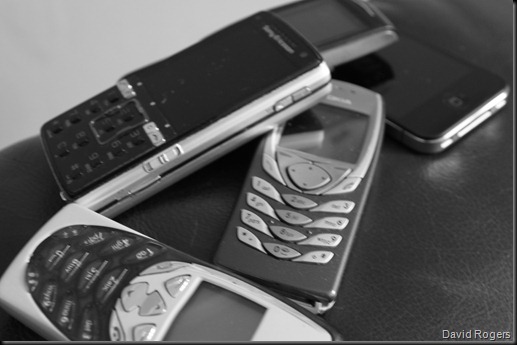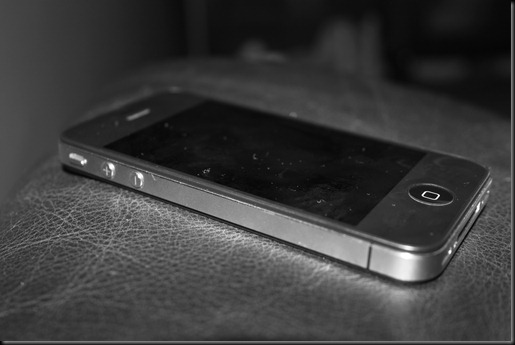Phones have come a long way since I first used one many years ago. Then, they came attached to a huge battery box and were only partially successful in making calls. Today, we carry around powerful mini-computers.
This is the first in a series of posts that will consider issues around the creation of an ‘acceptable use policy’ for mobile phones in students’ social time. I use the term as it best describes to readers what it is we did.
The main feature of the policy is that students wrote it. One areas in which students felt strongly about is that it should apply equally to all members of the school community. This meant that the responsibilities of bringing a mobile device to school should apply equally to students and teachers. I plan to share the policy widely once it has gone through the trial period, but the introductory statement is as follows:
Members of the Priory School community have the right to use their mobile devices during non-learning time provided that each individual accepts their responsibility to respect the rights of privacy and education of others and that their use of mobile devices is within the law.
(This is the draft wording)
This approach begs the question: how do we use our own mobile devices to support learning? Here are a few ideas, all methods that I have used within the classroom. I use an iPhone.
1. Use the phone’s camera and DropBox to share students work via a data projector. I picked up this idea from a blog that I can’t remember – if it was you please let me know so I can link to the original post. The iPhone Dropbox App allows you to upload photographs. At the same time, display the Dropbox folder via a data projector and you can instantly share examples of good work, inviting students to comment. Instructions are here. We use this to start discussion when students are making tourist adverts for Thailand and to share the results from Mission:Explore work.
2. Use Evernote to record assessment evidence. I love Evernote, and if it’s not inside Evernote then the likelihood is that I won’t remember it! Of course, in secondary schools, we need to be mindful of the written assessment regime. However, we think that it;s good practice to allow students to be assessed in a multitude of ways. Evernote allows us to capture written and oral evidence. Create a folder for each class (one of my team has 19 classes each year) and add in assessment evidence during normal lessons. This allows judgments to be made about each pupil and builds up a better picture as well as creating a portfolio of work.
3. Use Evernote to set student challenges / tasks / missions; monitor their progress and allow them to communicate with each other. This works best when students are using their own mobile devices or have access to Evernote. See this post using iPads.
4. Use Twitter to communicate the the ‘real’ world in real time, to share student work (as photographs), gain questions and provide an audience. For example see this post on Cheese and Toast.
5. Use Keynote through a MacBook / iMac / iPad and control it using the Keynote Remote app. One of my observations of teachers is that they are often tethered to the desk. Using this, you are able to roam around the room. One of the benefits of this is that the teacher is able to use subtle classroom management techniques, such as simply standing next to an off-task pupil. What I like about the iPhone remote is that I can glance at my teacher notes. this is helpful as I limit the amount of words on each slide. It also allows me to make a note of which pupils will need extra support / challenge at each stage of the lesson.
6. Model the use of mobile phones for good. This could include using news websites and the internet to access information.
How would / do you use your mobile device to support learning?


Comments
Post a Comment